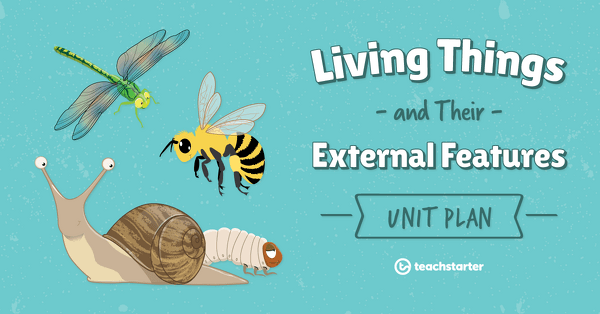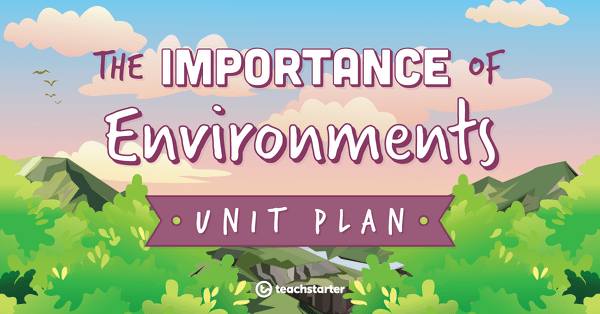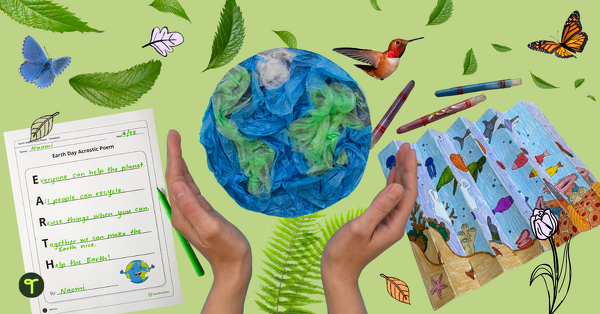Ecosystems and Habitats Teaching Resources
Explore printable ecosystems worksheets, digital habitat activities and more for teaching this important element of the elementary and middle school science curriculum!
This collection of teacher resources was created by teachers to align with NGSS standards, providing you with everything you need to teach kids about biodiversity, habitats and more!
New to teaching about habitats and ecosystems in the primary classroom, or just looking for some fresh ways to engage your students on the topics? Read on for a primer from our teacher team, including a handy definitions for kids on each topic, plus a breakdown of the difference between these two important science terms.
What Is a Habitat? A Definition for Kids
Do you need a quick and easy way to explain the meaning of habitat to your students? Our teacher team has created a definition you can use in the classroom to do just that!
A habitat is a place where plants and animals live. It provides the things that they need to survive, like food, water and shelter.
5 Habitat Examples for Kids to Share in Your Classroom
This definition is a good starting point, but perhaps you're looking for a handy list of habitat examples you can share? We've got you covered with that too!
Please note that this list includes five of the planet's major habitats. Some scientists list as many as 16, however this list includes those our students are most likely to need to know about in primary school.
- Desert — The desert habitat is known for its dry and hot conditions, where animals such as the camel and plants such as cacti thrive. Some examples include the Gobi Desert in China and the Sahara Desert in Africa.
- Marine — Also known as the aquatic habitat, marine is larger of all habitats on the planet. Rivers, lakes, streams and, of course, the five oceans on planet Earth provide homes for a variety of marine animals live — from fish to whales to coral and much more.
- Polar — This habitat is found on the two ends of the earth, called the North and South Poles. Plants and animals that live in the polar habitat have adapted to its extreme cold temperatures.
- Forest – The forest habitat makes up nearly a third of the world's landmass. This habitat can be broken down into different types of forests, including the coniferous forests, coastal forests and tropical rainforests. The latter are known for being warm and very moist — just as the name implies, this habitat gets a lot of rain! The most famous of the world's rainforests is the Amazon which covers 2.6 million square miles.
- Grassland — One of the largest habitats in the world, grassland typically has moderate to warm weather and plenty of grass for animals to graze on.
What Is an Ecosystem? A Kid-Friendly Definition
We've covered the meaning of habitat, but what about ecosystem? Here's a definition from our teacher team to use in the classroom:
An ecosystem is a community of living organisms and nonliving things in a particular area. For example, an ecosystem can include plants, animals and microorganisms that are all living, as well as soil, water and sunlight, which are not.
The living and nonliving things in an ecosystem interact with each other and are interdependent.

Ecosystem vs. Habitat — What's the Difference?
These two science concepts are clearly interrelated, which can be confusing for students. So let's outline the differences.
Habitats
Kids can think of a habitat as a specific place where certain plants and animals live. A habitat is a home, and it's where those plants and animals have everything they need to survive — sort of like the things that students might find in the place where they live. There is shelter, food and water.
Ecosystems
On the other hand, it can be helpful for students to remember that an ecosystem is like a big, interconnected community of habitats.
An ecosystem also goes beyond just plant and animal life.
This larger system includes both living (plants and animals) and non-living (air, water) things. It also includes all the interactions and relationships between the living and non-living things within it.
- Plus Plan

Let's Build an Earthworm House
A 60 minute lesson in which students will identify that living things live in different places where their needs are met.
- Plus Plan

Deserts
A 60 minute lesson in which students will understand how climate can influence the vegetation and animals found in a desert.
- Plus Plan

Structural Adaptations
A 60 minute lesson in which students will explore the structural adaptations of plants and animals.
-

12 Teacher-Approved Earth Day Activities for Kids to Green Your Classroom (Plus Teacher Freebies)
Make Earth Day count with these fun Earth Day activities for kids in the classroom that incorporate math, science, and more, plus access free seeds, resources, and more for teachers!
- Ecosystems and Habitats Worksheets
- Ecosystems and Habitats for Kindergarten
- Ecosystems and Habitats for 1st Grade
- Ecosystems and Habitats for 2nd Grade
- Ecosystems and Habitats for 3rd Grade
- Ecosystems and Habitats for 4th Grade
- Ecosystems and Habitats for 5th Grade
- Ecosystems and Habitats for 6th Grade